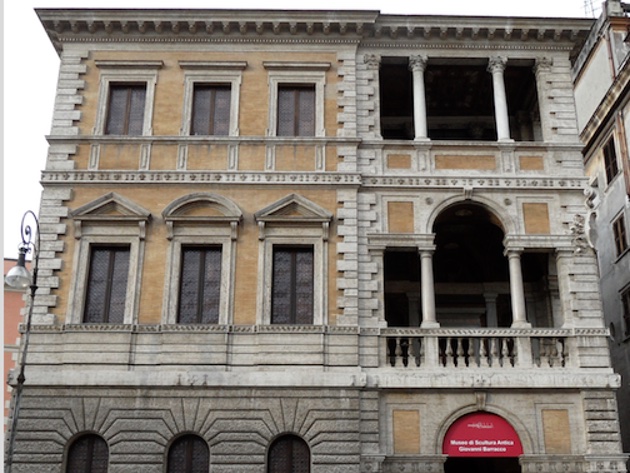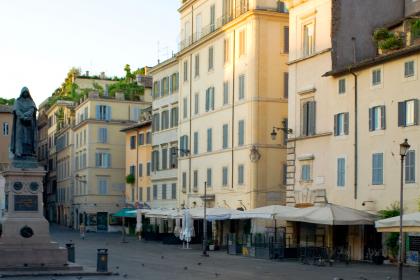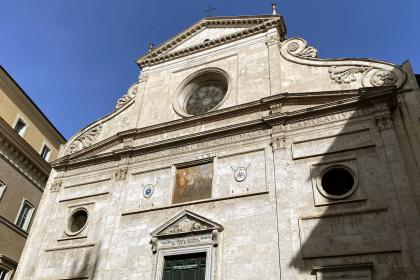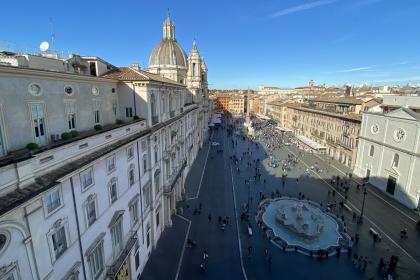
The elegant Renaissance building is located near Campo de’ Fiori and has been hosting, since 1948, the Giovanni Barracco Museum of Ancient Sculpture, which houses the collection of sculptures donated to the city by Baron Giovanni Barracco in 1905.
The symbols of the lilies of France and the ermines placed on the façade of the palace were confused with the heraldic symbols of the Farnese and for this reason it was also called "Little Farnesina”.
The building, built in 1523 for the French prelate Tommaso Le Roy, probably based on a project by Antonio da Sangallo the Younger (1483-1546), stands on the archaeological remains of a Roman domus from the III-IV century AD. Inside this domus, during the excavations at the end of the 19th century, frescoes with hunting and fishing scenes were found, which were later detached and placed in a room on the ground floor.
During the urban transformations for the construction of Corso Vittorio Emanuele II, the building underwent, between the years 1886 and 1900, important modifications by the architect Enrico Guj: despite this, the Renaissance elements are still well recognizable.
Photo credits: Giovanni Barracco official site
Campo de’ Fiori

 Condividi
Condividi
The Basilica of Sant’Agostino in Campo Marzio

 Condividi
Condividi
Navona Square

 Condividi
Condividi
The most iconic square of Baroque Rome
Information
Palazzetto Le Roy is open with the same hours as Barracco Museum.
 Condividi
Condividi
Location
To find out about all accessibility services, visit the Rome accessible section.











































